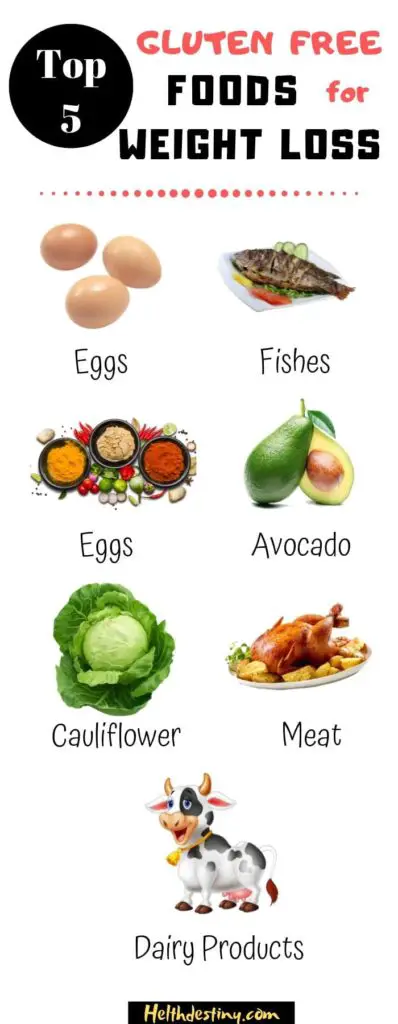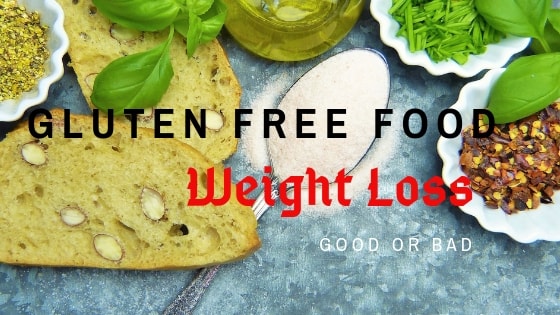We guys always wonder everytime, when we look at some models or even our friends who are in perfect shape. Always think to get sometime like them, with that same kind of shape. It’s human nature actually. So coming to the topic, to get a perfect shape we have always put a check on our diet and our lifestyle. To do so there are many stuffs online that you can go for. Some works, some don’t. Some are hard to follow, some easy. There always been a conception of losing weight in our mind by having food that are gluten free. We’ll today in this post we will share you guys important gluten free foods that you can go for during your weight loss mission.
First thing first, we shall first know what is gluten? what are the issues that we can face if we don’t control intake of gluten food. More importantly, we should also know, if gluten is even essential for our body or not. We will answer all these in out below post. So keep reading it full.
What is Gluten?
You must be knowing, gluten is a protein form that is primarily found in wheat, rye and barley and also it is a component in many ingredients in our daily food.The name is derived from Latin word glue – glutinum, which describes it’s basic function: Gluten gives food its shape, binds it together, and provides elasticity.
Everyday food that contains Gluten
Here are some of the listings for foods that we eat in our everyday lifestyle that contains gluten:
- Wheat (including all wheat-based flours)
- Pasta/noodles (including egg noodles and ramen)
- Baked goods (cookies, cakes, muffins, pastries)
- Beer
- Bread (including bread crumbs, croutons)
- Cereals
- Flour tortillas
- Sauces (including soy sauce, salad dressings, and malt vinegar)
- Soup broths
Difference between Gluten free foods and Wheat free foods?
Since gluten is found in wheat, rye and barley, all gluten-free foods will also be wheat-free. But wheat-free foods, however, may still contain gluten in the form of rye or barley. (Source)
Is gluten good or bad for you?
A gluten-free diet is the only option for people with celiac disease, a severe gluten intolerance. Now, many people without this condition are ‘going gluten free’ because they believe it is a healthful option.
Can a Gluten-Free Diet Help You Lose Weight?
While cutting out gluten may help relieve side effects for those suffering from celiac disease or a wheat allergy, it won’t necessarily help the average person lose weight.
“You may see some initial weight loss when going on a gluten-free diet, if you switch to eating only whole unprocessed foods,” says Benté. “But if you go to a gluten-free diet and continue to eat processed foods you probably won’t see any difference. For example, if you swap regular pizza for a gluten-free pizza crust you’re having around the same calories. But if you swap regular spaghetti for zoodles, you’ll lose weight because your calorie consumption is going down.”
Schenker agrees, and suggests that the limiting options of a gluten-free diet may be used as an excuse to not eat calorific foods. “Many people think gluten causes weight gain,” she says. “But that’s simply not the case. However, cutting out gluten does limit your options. Cakes, cookies, bread, and pasta often contain gluten, so removing them from your diet can reduce your calorie intake and result in weight loss.”
5 Naturally Gluten-Free Foods
1. Avocado
This creamy, low-carb fruit is high in fiber, healthy fats, and potassium. Some studies have also shown that eating a meal that includes avocado can help you feel fuller, for up to five hours.
But before you go mashing an entire avocado on your toast, keep in mind that a typical serving size is 1/4 a medium avocado. Yes, avocados are packed with nutrients, but they’re also calorie-dense, so watch your portions.
2. Whole Grains
Most grains are actually gluten-free; remember, it’s wheat, rye, and barley that you want to avoid. So, when it comes to other whole grains, the world is your oyster, including these three:
Brown Rice
All forms of rice are free from gluten, but if it’s health and weight loss you’re after, go for brown. White rice is processed to remove the bran and germ, which destroys many of the nutrients and much of the fiber. Brown rice only has the husk removed so this grain is still packed with vitamins and minerals, plus fiber for satiety.
Brown rice is a great source of slow-release carbohydrates and is lower on the glycemic index (GI) scale than white rice. Studies have shown that swapping white rice for brown may lower your risk of developing type 2 diabetes.
Quinoa
Quinoa is an ancient South American grain crop and an excellent replacement for pasta, couscous, and even breakfast cereals. A cup of cooked quinoa contains eight grams of protein (for building muscles!), five grams of fiber (to keep you feeling full!) as well as vitamins and minerals, like calcium, magnesium, potassium, and folate.
Buckwheat
The name may be confusing but this plant is not related to wheat. In fact, it’s related to rhubarb and entirely gluten-free. Buckwheat has a nutty flavor and can be used as an alternative to rice or quinoa, while buckwheat flour is a great gluten-free option for pancakes and the main ingredient in Japanese soba noodles.
3. Cauliflower
The humble cauliflower is finally having its moment in the spotlight. It seems like there’s no recipe that you can’t sub it in as a low-carb, low-calorie alternative: nachos, fried “rice,” gratin, roasted cauliflower “steaks,” — the possibilities are endless.
Cauliflower rice is super-simple to make: Cut a head of cauliflower into florets, then pulse to a rice-like consistency in a food processor. Feeling lazy? Most supermarkets now sell cauliflower pre-riced.
And because of its relatively bland taste, cauliflower soaks up the flavors of whatever you cook it with, and makes a great bulking agent for mashed potatoes and is ideal as a gluten-free thickening agent for sauces, soups, and gravy.
4. Spices
Chili Pepper
One of the primary flavors in Indian food is chili, something you can add to a variety of dishes at home. Check the ingredients in commercial spice mixes carefully, though, as they can sometimes contain wheat. As long as you steer clear of the bread, Indian cuisine is a good option for gluten-free meals since sauces are often thickened with yogurt or chickpea flour rather than wheat.
Turmeric
This golden spice is another great way to add flavor to foods without adding sauces that may contain gluten. A member of the ginger family, turmeric has long been used in medicines in India.
Turmeric in its root form can be grated raw into salads and coleslaws or cooked in Indian dishes for a citrusy, earthy, peppery hit. Be warned — it will stain your fingers and work surface if you’re not careful.
If you’re buying dried turmeric, double check the label to make sure it’s gluten-free. Most brands are perfectly safe, but some may become cross-contaminated in factories that also produce spice mixes and other products. Dried turmeric adds a slightly less punchy flavor than the root to dahls and Indian dishes.
Cinnamon
This sweet spice has been used throughout history for flavoring and as an herbal medicine. There is some research that suggests it may have medicinal benefits, but more research needs to be done.
Cinnamon is often found in many gluten-containing sweet treats, which is a good excuse to get in the kitchen and create your own healthy alternatives.
5. Meat, Fish, Poultry, Dairy, and Eggs
All of these foods are gluten-free; it’s only when sauces, toppings, sides are added to the mix that you need to keep an eagle eye out for gluten. Protein is essential for repairing and building muscle; it’s also more filling, takes longer to digest, and requires more energy to metabolize.

